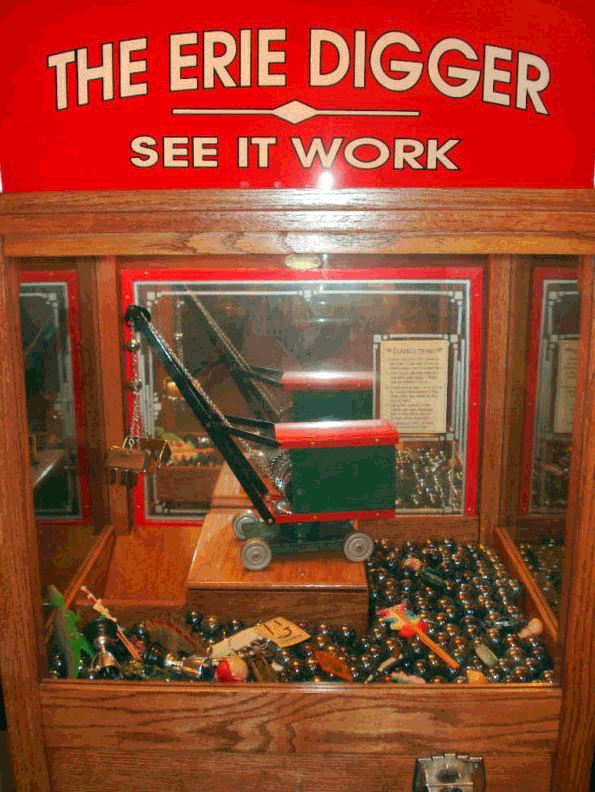The Evolution and Economics of Claw Machines
It began as a mechanical novelty in the early 20th century has evolved into a multi billion-dollar global industry..
Introduction
Claw machines, those ubiquitous glass-encased temptations found in arcades, supermarkets, and shopping malls, represent a unique intersection of mechanical engineering, behavioral psychology, and capitalist ingenuity. What began as a mechanical novelty in the early 20th century has evolved into a multi billion-dollar global industry, leveraging advanced algorithms to balance player satisfaction against profit margins. This paper traces the technological, economic, and cultural trajectory of claw machines, examining their origins in industrial machinery, their transformation into programmable profit engines, and the ethical dilemmas posed by their modern iterations. By synthesizing historical records, technical manuals, and consumer data, this study argues that claw machines exemplify a broader tension between entertainment and exploitation in unregulated gaming ecosystems.
Historical Origins
The claw machine’s lineage can be traced to the Panama Canal excavation (1904–1914), where steam shovels captivated public imagination as symbols of technological progress. By the 1920s, entrepreneurs capitalized on this fascination by miniaturizing these machines into coin-operated amusement devices. The Erie Digger (1926), patented by the Erie Manufacturing Company, emerged as the first commercially successful model. These early machines dispensed candy through a hand-cranked shovel mechanism, requiring players to physically swing a miniature steam shovel across a glass case-a process demanding both skill and timing.
A pivotal innovation arrived in 1932 with William Bartlett’s Nickel Digger, which introduced electric motors and coin-operated gameplay. Bartlett’s design replaced candy with monetary prizes (nickels, silver dollars) and luxury items like cigarette lighters, transforming claw machines into proto-gambling devices. By renting rather than selling units, Bartlett created a scalable revenue model that dominated carnivals and bus stations throughout the Great Depression. However, the 1950 Johnson Act reclassified claw machines as gambling devices, forcing operators to remove coin receptors and revert to mechanical controls, a regulatory blow that stifled innovation for decades.
Technological Evolution
The 1980s marked a renaissance for claw machines, driven by two innovations:
I. Sega’s UFO Catcher (1985)
Sega reimagined the claw mechanism as a trolley-style crane with a UFO-shaped gripper, enabling multidirectional movement via joystick controls. Unlike its predecessors, the UFO Catcher prioritized looks and accessibility, featuring brightly lit cabinets and plush toys instead of cash prizes. This shift broadened the machine’s appeal beyond adult gamblers to families and children, cementing its status as an arcade staple.
II. Programmable Logic Controllers (1990s–Present)
Modern claw machines employ embedded systems that adjust claw strength, grip duration, and payout rates algorithmically. Operators can fine-tune these parameters via touchscreen interfaces, setting a target profit margin (e.g., 60%) that the machine maintains by weakening the claw’s grip after a predetermined number of wins. For example, a machine might operate at 12 volts for a secure grip but drop to 6 volts after three consecutive wins, ensuring the house always maintains an edge.
Economics & Revenue Optimization
Operators employ sophisticated strategies to balance player engagement with profitability, leveraging both mechanical adjustments and psychological insights. In high-traffic locations such as shopping malls or entertainment districts, claw machines are often programmed with dynamic difficulty algorithms that reduce payout rates to between 15% and 20%. These settings ensure consistent revenue by adjusting claw strength and grip duration based on real-time performance metrics, effectively prioritizing profit margins over player success rates.
Complementing this approach, operators frequently mix premium licensed characters-such as Pokémon or Sonic-with generic plush toys at a ratio of approximately 20% to 80%. While licensed prizes attract more player engagement according to sourced data from industry study of 1,200 machines, generic toys from manufacturers in China’s Guangdong province cost 80-90% less to procure, enabling operators to achieve 45% higher net margins despite their lower perceived value.
Consumer Fairness:
The machines’ addictive potential is further amplified through engineered near-miss scenarios, where prizes teeter very close to the chute before slipping away. Behavioral studies demonstrate that these near-misses trigger dopamine responses comparable to actual wins, conditioning players to perceive failure as impending success. By manipulating claw retraction speeds and randomized grip failures, operators can extend play sessions by 40-60% compared to transparently fair machines, effectively monetizing cognitive biases through carefully calibrated frustration-reward cycles.
Discerning players can employ several methods to evaluate a claw machine’s fairness, though the burden of proof often falls on individuals rather than regulators. In jurisdictions with robust amusement device laws, such as Japan’s monthly inspection mandate for arcades, machines display certified payout rates and undergo routine calibration checks. Conversely, unregulated markets allow operators to conceal algorithmic settings, resulting in machines where tightly packed prizes and erratic claw movements signal potential manipulation. Ethical operators typically leave visible gaps between prizes to facilitate legitimate grabs, while problematic machines may cluster plush toys against the glass or use compressed configurations that require mathematically improbable precision.
Observational techniques provide additional safeguards for vigilant consumers. Tracking outcomes across 10-15 consecutive players can reveal payout patterns, with success rates below 15% indicating aggressively tuned profit margins. Similarly, testing joystick responsiveness during idle periods helps identify machines with intentionally delayed controls or randomized directional lag-common sabotage tactics used to undermine player agency. These behavioral audits, while imperfect, empower players to make informed decisions in an industry where transparency remains the exception rather than the rule.
Ethical Questions
The claw machine industry thrives on asymmetric information: players perceive a test of skill, while operators deploy algorithms to ensure predictable losses. This disconnect raises ethical questions akin to those in loot box controversies, particularly when targeting minors. In Hong Kong, consumer complaints involved machines that auto-loosened claws or hid “guaranteed win” thresholds behind 30+ plays. Such practices exploit cognitive biases, transforming $5 attempts into $50 compulsions.
Conclusion:
Claw machines embody a paradox: they are simultaneously relics of mechanical ingenuity and pioneers of algorithmic manipulation. Their evolution from steam shovel mimics to programmable profit engines mirrors broader shifts in gaming, where user experience is increasingly subordinated to data-driven monetization. While licensed collaborations and regulated markets demonstrate that ethical operation is feasible, the industry’s reliance on generic plush and adjustable difficulty underscores a pervasive prioritization of margins over fairness. For consumers, the claw machine endures as a metaphor for modern capitalism’s glittering promise of reward, perpetually dangling just beyond reach.






